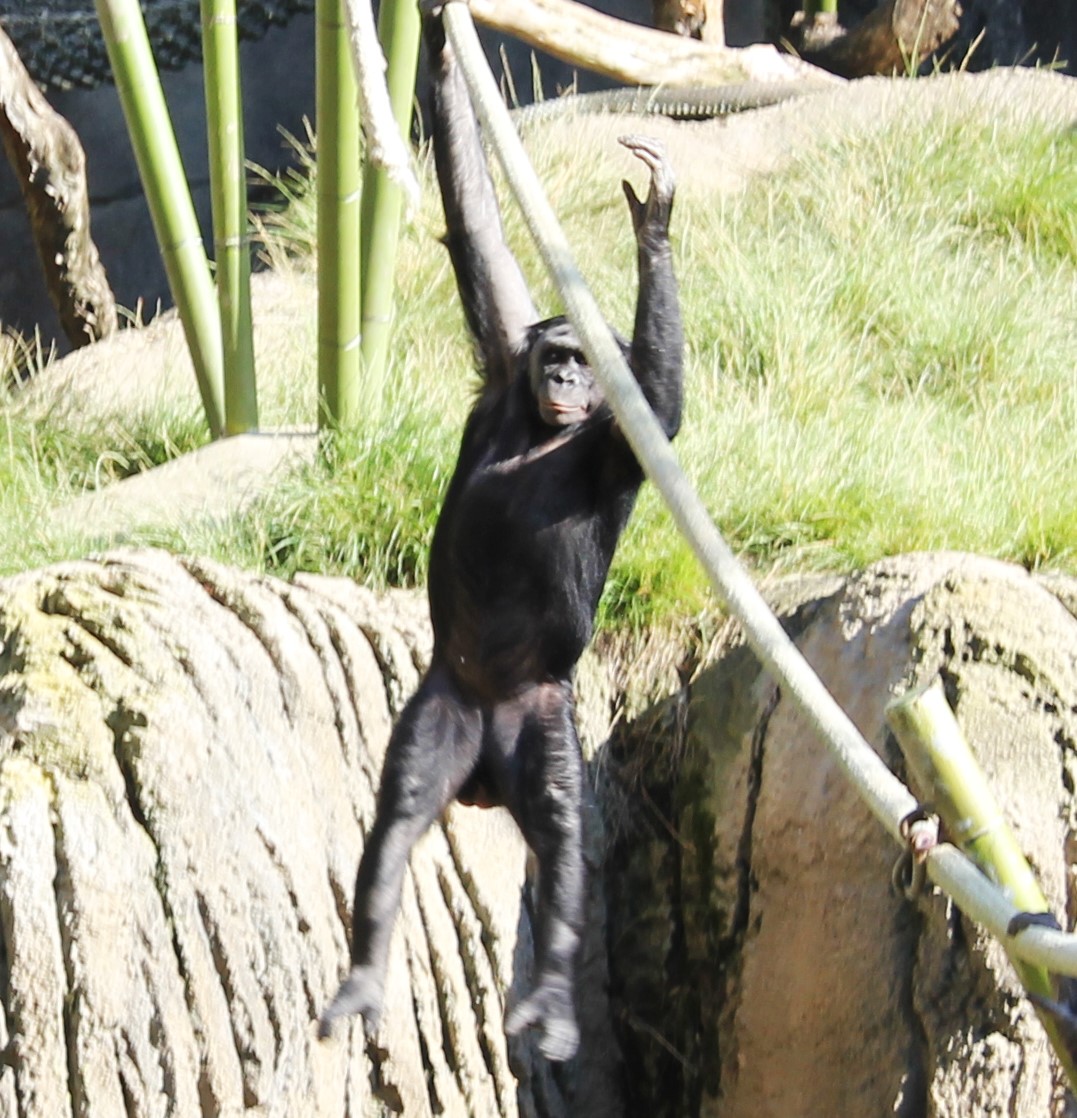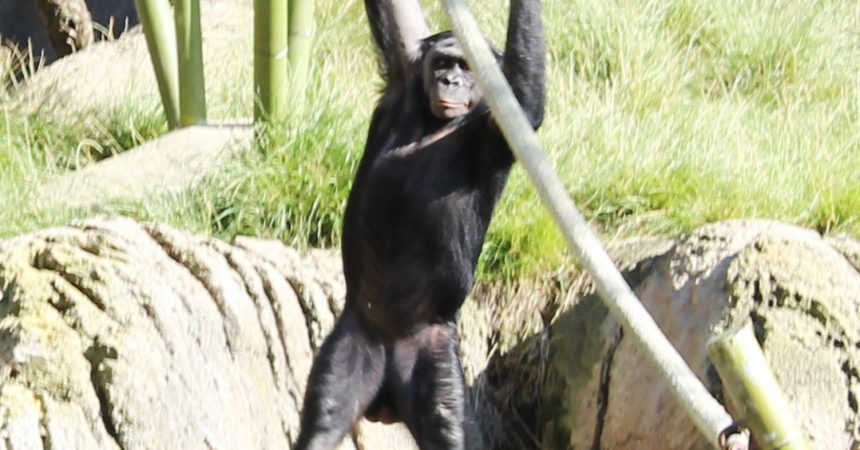Zoo InternQuest is a seven-week career exploration program for San Diego County high school juniors and seniors. Students have the unique opportunity to meet professionals working for the San Diego Zoo, Safari Park, and Institute for Conservation Research, learn about jobs, and the blog about their experience online. Follow their adventures here on the Zoo’s website!
 This week, interns met with Kim Livingstone. Kim Livingstone is one of the animal care supervisors for the Primate Department at the San Diego Zoo. After a brief introduction, Ms. Livingstone took interns to visit the bonobo exhibit at the Zoo and explained to us the ways that primates are extremely physiologically similar to humans. They even take some of the same medications we do such as birth control and tylenol for colds. Bonobos are highly sexual animals, and birth control is necessary to control breeding. In addition, bonobos are highly susceptible to respiratory diseases, which is where the tylenol cold and flu can come in handy. There are only seven zoos in the country that have bonobos. Moreover, these zoo’s decide who to breed based on the genes of the animals and how it will span out over the next 100 years to have a genetically healthy and sustainable population. Ms. Livingstone said that there is no such thing as an overweight bonobo. They are incredibly strong, and intelligent creatures. Bonobos at the Zoo often can learn behaviors such as clapping from imitating humans. Unfortunately, Ms. Livingstone said that she doubts they will be able to survive in the wild much longer.
This week, interns met with Kim Livingstone. Kim Livingstone is one of the animal care supervisors for the Primate Department at the San Diego Zoo. After a brief introduction, Ms. Livingstone took interns to visit the bonobo exhibit at the Zoo and explained to us the ways that primates are extremely physiologically similar to humans. They even take some of the same medications we do such as birth control and tylenol for colds. Bonobos are highly sexual animals, and birth control is necessary to control breeding. In addition, bonobos are highly susceptible to respiratory diseases, which is where the tylenol cold and flu can come in handy. There are only seven zoos in the country that have bonobos. Moreover, these zoo’s decide who to breed based on the genes of the animals and how it will span out over the next 100 years to have a genetically healthy and sustainable population. Ms. Livingstone said that there is no such thing as an overweight bonobo. They are incredibly strong, and intelligent creatures. Bonobos at the Zoo often can learn behaviors such as clapping from imitating humans. Unfortunately, Ms. Livingstone said that she doubts they will be able to survive in the wild much longer.
Deforestation and human interference is one of the biggest problems surrounding primates. Ms. Livingstone is a big advocator for sustainable communities that promote consumer awareness. When asked about what kind of efforts the Zoo is making to help, she explained that the biggest thing is educating communities where these animals live. Teaching people about solar energy, composting, burning trash, hybrid cars and knowing where your products come from are all important steps to take towards rebuilding the ecosystem. She mentioned that there is a sanctuary in the Congo called Lola Ya Bonobo, that is solely dedicated to saving, rehabilitating, and releasing bonobos back into the wild.
There are many other species that are having similar problems as the bonobos. The California condors were in very low numbers in the 1980’s due to habitat destruction and human contaminants. In Uganda, mountain gorillas are slowly moving up the mountains due to habitat loss to unsustainable areas because there is not enough food. Overbreeding also can cause issues with lack of recourses for a species to survive. African lions are dying from contamination of parvo from local dogs, and elephants are major victims of poaching for ivory. There are so many other species that are victims to human invasion, and that’s why educating the public on how to help these issues is so important. Being aware of what we purchase and where it comes from, recycling, properly disposing waste, and using less paper products are all very simple things that people can do to help make a difference.
Teah, Conservation Team
Week Two, Fall Session 2016


